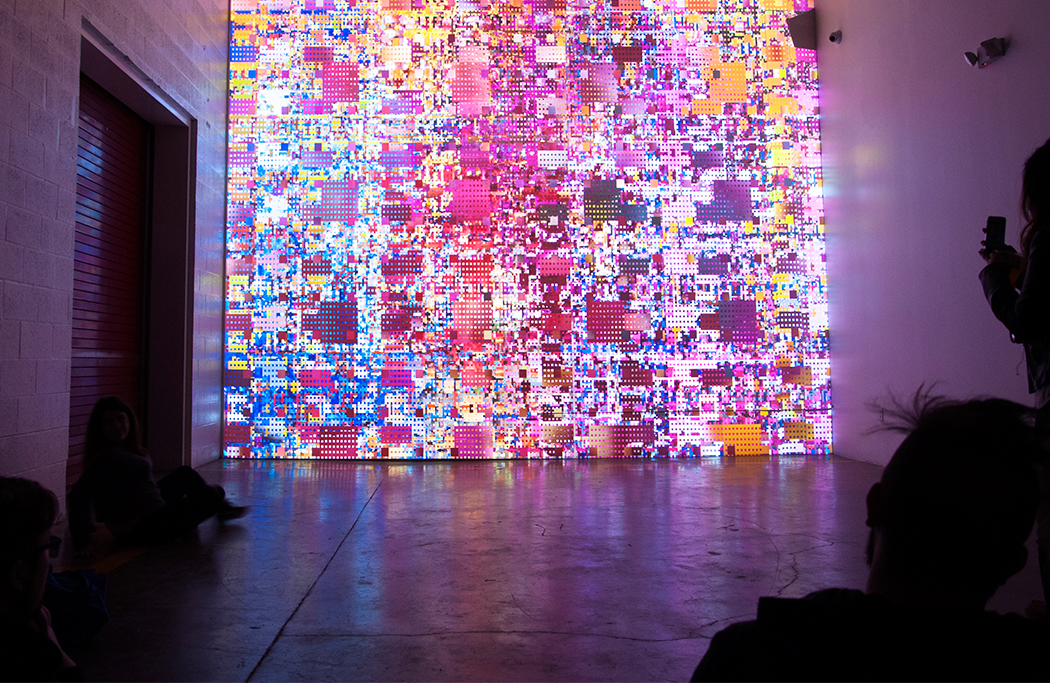Creating Art with Code
-
-
Slice of MIT
- 1
Filed Under
Recommended

For his work, Reas typically takes a type of visual media, like television footage or images from a magazine, and translates it into a processing digital form—as the images intertwine and move, there is never an end, he explains.
Reas has become a pioneer in the field of software art in the last 15 years, after graduating with his master’s from MIT where he was part of the Aesthetics and Computation Group at the Media Lab. As a research assistant in the group, Reas, who has a background in graphic design, started combining different areas of the visual arts. “I was trained to work with printing technologies,” says Reas. “But I started applying what I knew about typography and visual design to the web in 1995, which led me to work with software."
In 2001, Reas—along with fellow classmate Ben Fry SM '00, PD '04, PhD '04—created Processing, an open-source programming language and visual environment for coding. When Processing first began, the convergence of software and the arts was a pretty novel idea, and today it has expanded and is used by not only artists and coders, but also designers, filmmakers, educators, musicians, performers, and students.
Although software art is the central focus of Reas’ work, he also has installations and prints, performance events, and set stage designs and his work has been in more than 100 exhibitions in venues all over the world.
Reas lives and works in Los Angeles where he is a professor of design media arts at the University of California. This video shows a recent installation, KNBC, which is an audio and visual distortion of television signals broadcast during December 2015 over the 602-608 MHz spread of the electromagnetic spectrum from a tower located at 34°13′32″N, 118°3′52″W. The signals were captured and archived at the artist's studio in Los Angeles. The edited signal is looped continuously as the data are extracted, amplified, and composed into a new stochastic audiovisual stream.








Comments
David Rodriguez
Tue, 03/22/2016 11:09pm
Do you not see images?You're so close to summoning demons.